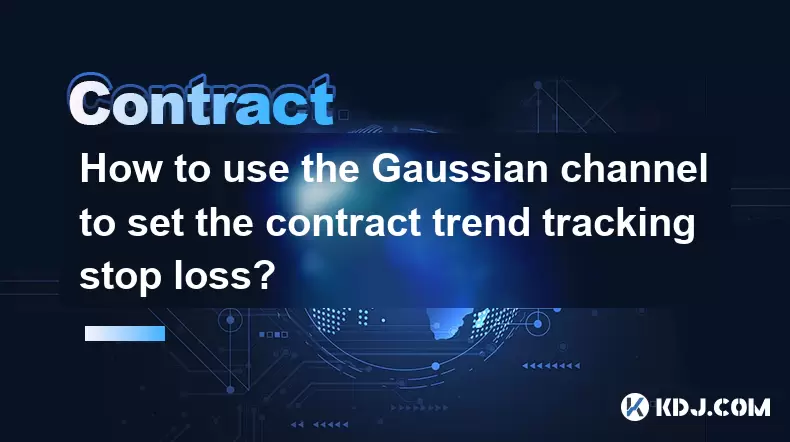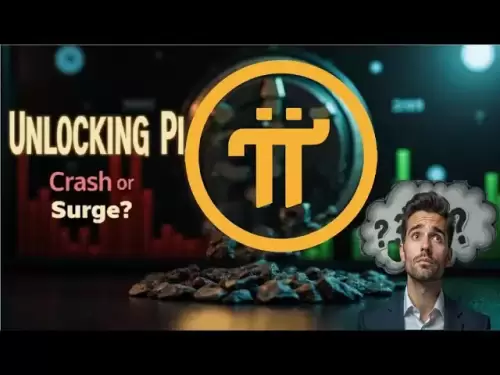-
 Bitcoin
Bitcoin $105,734.0170
-1.51% -
 Ethereum
Ethereum $2,414.7328
-3.26% -
 Tether USDt
Tether USDt $1.0002
0.00% -
 XRP
XRP $2.1748
-2.62% -
 BNB
BNB $647.5663
-1.72% -
 Solana
Solana $148.1710
-3.81% -
 USDC
USDC $0.9999
-0.01% -
 TRON
TRON $0.2799
-0.02% -
 Dogecoin
Dogecoin $0.1586
-4.17% -
 Cardano
Cardano $0.5440
-5.03% -
 Hyperliquid
Hyperliquid $37.0680
-6.59% -
 Bitcoin Cash
Bitcoin Cash $501.2052
-4.01% -
 Sui
Sui $2.6846
-3.47% -
 Chainlink
Chainlink $12.8488
-3.38% -
 UNUS SED LEO
UNUS SED LEO $8.9480
-1.51% -
 Avalanche
Avalanche $17.2059
-3.87% -
 Stellar
Stellar $0.2270
-4.75% -
 Toncoin
Toncoin $2.7889
-3.93% -
 Shiba Inu
Shiba Inu $0.0...01126
-1.76% -
 Litecoin
Litecoin $83.6893
-3.36% -
 Hedera
Hedera $0.1445
-4.49% -
 Monero
Monero $312.4014
-2.58% -
 Dai
Dai $1.0000
0.00% -
 Ethena USDe
Ethena USDe $1.0001
-0.01% -
 Polkadot
Polkadot $3.2920
-3.32% -
 Bitget Token
Bitget Token $4.4629
-1.81% -
 Uniswap
Uniswap $6.5386
-8.42% -
 Aave
Aave $260.3780
-6.01% -
 Pepe
Pepe $0.0...09308
-4.54% -
 Pi
Pi $0.4864
-3.04%
Gate.io perpetual contract tutorial example
Gate.io's user-friendly platform offers leverage options for perpetual contract trading, allowing traders to maximize their potential returns and manage risk effectively.
Nov 20, 2024 at 04:21 am

Gate.io Perpetual Contract Tutorial
Introduction
Perpetual contracts are a type of futures contract that allows traders to speculate on the future price of an asset without having to take delivery of the underlying asset. They are similar to traditional futures contracts, but with no fixed expiration date. This makes them ideal for traders who want to hold positions for an extended period of time.
How to Trade Perpetual Contracts on Gate.io
To trade perpetual contracts on Gate.io, you will need to first create an account and deposit funds. Once you have done this, you can follow these steps to place a trade:
- Choose a trading pair. The first step is to choose the trading pair that you want to trade. Gate.io offers a wide range of trading pairs, including BTC/USDT, ETH/USDT, and XRP/USDT.
- Choose a position. Once you have chosen a trading pair, you need to choose whether you want to take a long or short position. A long position is a bet that the price of the asset will go up, while a short position is a bet that the price of the asset will go down.
- Enter the order size. The next step is to enter the order size. This is the number of contracts that you want to trade.
- Set the leverage. Leverage is a feature that allows you to trade with more capital than you have in your account. However, it also increases your risk of loss.
- Submit the order. Once you have entered all of the required information, you can submit the order. Gate.io will then match your order with another trader who is willing to take the opposite position.
Example of a Perpetual Contract Trade
Let's say that you want to open a long position on the BTC/USDT trading pair. You believe that the price of Bitcoin is going to go up. You deposit $1,000 into your Gate.io account and choose the BTC/USDT trading pair. You then enter the following information into the order form:
- Position: Long
- Order size: 1 BTC
- Leverage: 10x
This order means that you are betting that the price of Bitcoin will go up. If the price of Bitcoin goes up, you will make a profit. If the price of Bitcoin goes down, you will lose money.
Tips for Trading Perpetual Contracts
Here are a few tips for trading perpetual contracts:
- Use leverage carefully. Leverage can be a powerful tool, but it can also lead to significant losses. Only use leverage if you are comfortable with the risks involved.
- Set stop-loss orders. A stop-loss order is an order that automatically sells your position if the price of the asset reaches a certain level. This can help you limit your losses in the event of a sudden price drop.
- Manage your risk. It is important to manage your risk when trading perpetual contracts. This means only trading with capital that you can afford to lose.
- Do your research. Before you start trading perpetual contracts, it is important to do your research and understand the risks involved.
Disclaimer:info@kdj.com
The information provided is not trading advice. kdj.com does not assume any responsibility for any investments made based on the information provided in this article. Cryptocurrencies are highly volatile and it is highly recommended that you invest with caution after thorough research!
If you believe that the content used on this website infringes your copyright, please contact us immediately (info@kdj.com) and we will delete it promptly.
- Dogecoin, Meme Coins, and Crypto Investments: What's the Hype?
- 2025-07-02 14:30:12
- XRP: Institutional Positioning and the Undervalued Asset Narrative
- 2025-07-02 14:50:11
- SHIB Timeline & Growth Rate: Decoding Shiba Inu's Potential Ascent
- 2025-07-02 14:30:12
- Bitcoin Price Rollercoaster, ICO Mania, and the Fear of Missing Out (FOMO)
- 2025-07-02 13:10:12
- Coinbase, Crypto, and Amazon: A New Era of Financial Integration
- 2025-07-02 12:30:12
- BlackRock, Crypto.com, and Tokenization: A New Era for TradFi and DeFi
- 2025-07-02 13:10:12
Related knowledge

How to use the price slope to filter the false breakthrough signal of the contract?
Jun 20,2025 at 06:56pm
Understanding the Concept of Price Slope in Contract TradingIn contract trading, especially within cryptocurrency derivatives markets, price slope refers to the rate at which the price changes over a specific time period. It helps traders assess the strength and sustainability of a trend. A steep slope may indicate strong momentum, while a shallow slope...

How to determine the expected volatility of the contract through the volatility cone?
Jun 19,2025 at 12:28pm
Understanding the Basics of Volatility in Cryptocurrency ContractsIn the realm of cryptocurrency trading, volatility is a key metric that traders use to assess potential risk and reward. When dealing with futures contracts, understanding how volatile an asset might become over time is crucial for position sizing, risk management, and strategy developmen...

How to formulate a contract intraday trading plan in combination with the pivot point system?
Jun 21,2025 at 03:42pm
Understanding the Basics of Pivot Points in Cryptocurrency TradingPivot points are technical analysis tools used by traders to identify potential support and resistance levels. These levels are calculated using the previous day's high, low, and closing prices. In the context of cryptocurrency trading, where markets operate 24/7, pivot points help trader...

How to adjust the contract position ratio through the price fluctuation entropy?
Jun 22,2025 at 11:42am
Understanding Price Fluctuation Entropy in Cryptocurrency ContractsIn the world of cryptocurrency futures trading, price fluctuation entropy is a relatively new concept used to measure market volatility and uncertainty. It derives from information theory, where entropy refers to the degree of randomness or unpredictability in a system. In crypto contrac...

How to use the volume swing indicator to predict the contract volume-price divergence?
Jun 18,2025 at 11:42pm
Understanding the Volume Swing IndicatorThe volume swing indicator is a technical analysis tool used primarily in cryptocurrency trading to evaluate changes in volume over time. Unlike price-based indicators, this metric focuses solely on trading volume, which can provide early signals about potential market reversals or continuations. The key idea behi...

How to use the Gaussian channel to set the contract trend tracking stop loss?
Jun 18,2025 at 09:21pm
Understanding the Gaussian Channel in Cryptocurrency TradingThe Gaussian channel is a technical indicator used primarily in financial markets, including cryptocurrency trading, to identify trends and potential reversal points. It is based on statistical principles derived from the normal distribution, commonly known as the Gaussian distribution or bell ...

How to use the price slope to filter the false breakthrough signal of the contract?
Jun 20,2025 at 06:56pm
Understanding the Concept of Price Slope in Contract TradingIn contract trading, especially within cryptocurrency derivatives markets, price slope refers to the rate at which the price changes over a specific time period. It helps traders assess the strength and sustainability of a trend. A steep slope may indicate strong momentum, while a shallow slope...

How to determine the expected volatility of the contract through the volatility cone?
Jun 19,2025 at 12:28pm
Understanding the Basics of Volatility in Cryptocurrency ContractsIn the realm of cryptocurrency trading, volatility is a key metric that traders use to assess potential risk and reward. When dealing with futures contracts, understanding how volatile an asset might become over time is crucial for position sizing, risk management, and strategy developmen...

How to formulate a contract intraday trading plan in combination with the pivot point system?
Jun 21,2025 at 03:42pm
Understanding the Basics of Pivot Points in Cryptocurrency TradingPivot points are technical analysis tools used by traders to identify potential support and resistance levels. These levels are calculated using the previous day's high, low, and closing prices. In the context of cryptocurrency trading, where markets operate 24/7, pivot points help trader...

How to adjust the contract position ratio through the price fluctuation entropy?
Jun 22,2025 at 11:42am
Understanding Price Fluctuation Entropy in Cryptocurrency ContractsIn the world of cryptocurrency futures trading, price fluctuation entropy is a relatively new concept used to measure market volatility and uncertainty. It derives from information theory, where entropy refers to the degree of randomness or unpredictability in a system. In crypto contrac...

How to use the volume swing indicator to predict the contract volume-price divergence?
Jun 18,2025 at 11:42pm
Understanding the Volume Swing IndicatorThe volume swing indicator is a technical analysis tool used primarily in cryptocurrency trading to evaluate changes in volume over time. Unlike price-based indicators, this metric focuses solely on trading volume, which can provide early signals about potential market reversals or continuations. The key idea behi...

How to use the Gaussian channel to set the contract trend tracking stop loss?
Jun 18,2025 at 09:21pm
Understanding the Gaussian Channel in Cryptocurrency TradingThe Gaussian channel is a technical indicator used primarily in financial markets, including cryptocurrency trading, to identify trends and potential reversal points. It is based on statistical principles derived from the normal distribution, commonly known as the Gaussian distribution or bell ...
See all articles

























































































